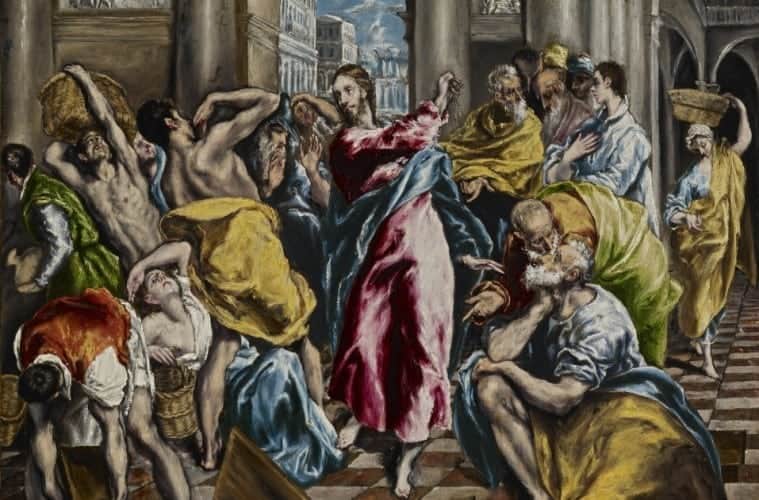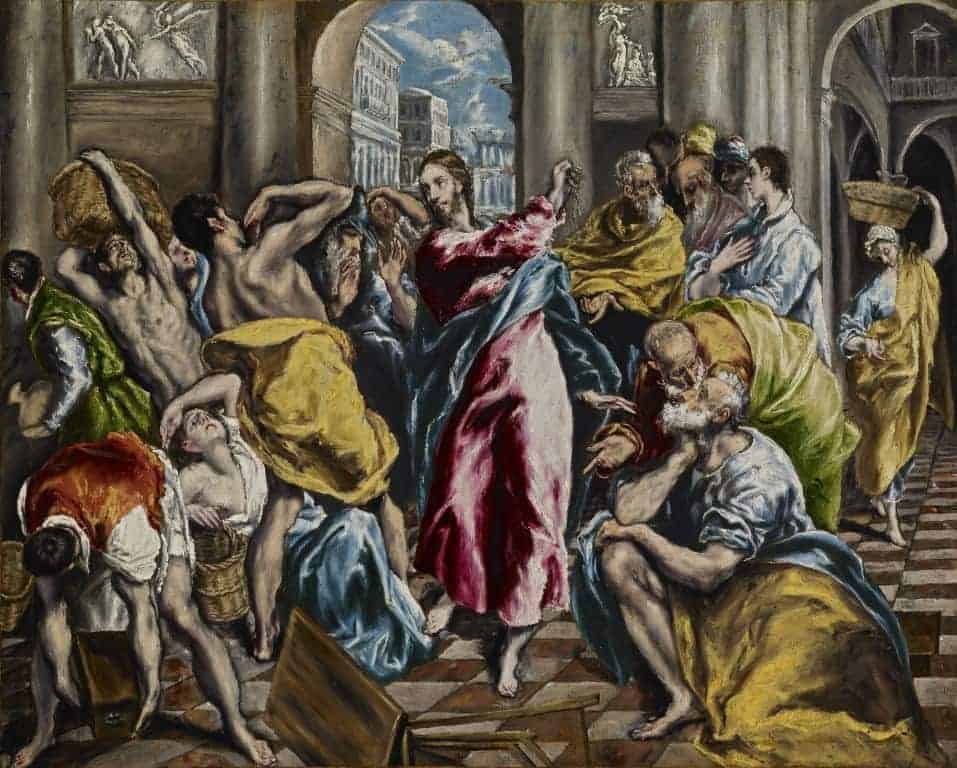There are many signs in today’s Gospel. But to understand them we have to ask: What is a sign? Why does God give us signs? What is their special language?
God is not visible to our eyes. Perhaps we regret that. We complain that we cannot see God. But Almighty God remains invisible. He is a Spirit.
God hears us gripe about His invisibility and His intangibility. And He indulges our childish complaining. In order to make us see His invisible presence — in order to get us to pay attention — God puts his creation to work. Like Mikey Mouse as the Magician’s Apprentice in Fantasia, God animates the mundane objects He made and gives them a life of their own. Mickey made mops and buckets dance. God makes priests speak of Him. He makes sacraments and temples tell of His power. He makes oil and water and wafers and colonnades and soaring domes sing of His love.
We human beings are not Creators. We’re creatures. God knows that, even if we chose to forget it. And God is a tireless teacher. He is an indulgent Father. Because we’re slow, He uses simple, tangible things to speak to us. God uses miracles to reach us human beings: flocks of quail or parting waters or angels singing hosannah in the sky. And when we creatures witness a miracle we understand, at least partially, that God is nigh.
But it is not only extraordinary things that can be the signs of God’s presence. The holy temple of Jerusalem, for example, was a sign of the divine presence. It was just a building made by man. Yet God Himself promised to dwell in that temple. That one place on earth, on Mount Moriah near the edge of the Judean desert, was the dwelling place of our Lord. The fact that some tolerated the transformation of the temple into a marketplace shows that it was no longer a sign of God’s presence for them. And so, once again, creatures rejected the Creator. We sinners understand this all too well.
The awful absurdity of today’s Gospel is that the very people who undermined the temple as a holy sign by filling it with their lust for gold — these very people — demanded that Jesus show them a new sign; another miracle. They wanted a new and more powerful sign to convince them that the Son of God had the right to expel the merchants and money-changers from His Father’s house. It’s idiotic. Yet we all do the same.
A sign: A sign is anything accessible to our senses that God uses to be closer to us. It could be a mop or a fish or a drop of water. It could be a miracle. It could also be a temple. In our Catholic lives, the seven sacraments, with their oils and benedictions and sacred gestures, are the most common signs. And yet the most powerful sign — the Sign of all signs — is Jesus Christ Himself. Because Jesus is visible and touchable and He is also God. In Jesus, God is united to human nature. God united Himself to our fallen nature, forever. And with His stripes we are healed (Isaiah 53:5).
A sign makes God accessible to our senses; a sign can penetrate our hearts. And so the Incarnation of Jesus and everything that was done by Him on earth was in fact a sign. Jesus worked miracles in order to touch human hearts. His every earthly action was there to teach us backward pupils a lesson. Jesus’s rage in the temple was a sign. The Gospel shows us how this sign works: the apostles saw Jesus’s outburst and divine grace penetrated their hearts. The sign got through to them. They had a moment of clarity. Grace awakened them to the meaning of a line of sacred Scripture, and they recalled the words of King David: Zeal for your house will consume me (Psalm 69:9).
Christ’s manly rage gave these words fresh meaning.
The same thing happened when the disciples of Jesus witnessed His Resurrection. That, too, was a sign. And the sign of the transfigured Christ, victorious over the grave, made his disciples think of the words he pronounced in this very same temple in Jerusalem: “Destroy this temple and in three days I will raise it up.” They were perplexed by the meaning of those words when Jesus said them. But thanks to a mighty sign, they finally copped on.
That is the beauty of signs. God’s signs are here to help us see that He is close to us. From the time of Abraham — indeed, from the time of Adam — our Lord has worked through signs. He acts through signs in order to awaken hope in the hearts of his people. He wants to awaken in us the knowledge of the Scriptures. He wants to awaken in us a realization — that precious moment of clarity, when we understand that we ourselves are His holy temples.
Because — and I hope this is not the first time you’re hearing this — we ourselves are God’s sanctuaries. Our bodies are His temples. And the Lord is jealous for the sanctity and purity of His dwelling. The Lord wants to straighten up His house. That is chastisement: that is Lent! Do you feel Him expelling impurity and sin with His whip? He is in your soul, whether you’re ready or not.
I am a temple of the Lord. You are a temple. At Mass, the Lord enters us physically in the form of bread, as if to remind us in the most literal way that He has chosen us as His dwelling. And like the temple of Jerusalem; like that vast and beautiful temple whose foundations and pavements and waterfall of steps we can still see today in the Holy City — like that temple of stone — you are a temple that contains His holy presence.
Every temple is in danger of being transformed into a marketplace. Every temple can be made into a cow pen or a chicken coop no longer suitable for prayer. We like it like that sometimes. We prefer the stink of the stable to the perfume of the sanctuary.
But that is something Jesus can’t abide. Because zeal for the house of His Father consumes Him. And so He enters you, whip in hand. And you will be clean.
Jesus wants to restore His temple. He wants to restore you to the beauty and dignity for which you were made. He paid for your purification by the destruction and resurrection of His own body. And that body — His body — is the most perfect temple there ever has been. It is a temple that cannot be destroyed, not even by death. It is a temple in which God dwells always and forever. And this Temple is laid open for you on this altar every day.
Here is a perfectly pure sanctuary: the Lord calls you to enter. “This gate is of the Lord; the righteous shall enter in,” as the Psalm says (Ps 118).
And you enter this Temple when this Temple enters you. That is the moment of communion. Think about that: you hear the words, “the Body of Christ” and you open and respond, “Amen.” And there He is, the Lord in his temple. It’s Lent: it is the time of purification. Let Him in.
Thanks to Brother I.S. from the Czech Republic, who composed the outline of this homily.



